80 years ago, on 7 December 1941, the Empire of Japan launched surprise attacks against the American Pacific Fleet at Pearl Harbour in Hawaii and British forces in Malaya, Singapore and Hong Kong. This anniversary seems an appropriate time to continue and conclude our previously untold story of a small group of New Zealanders serving as Air Force ground officers in Malaya and Singapore.
If you have not yet read part one, you can read it here.
Training
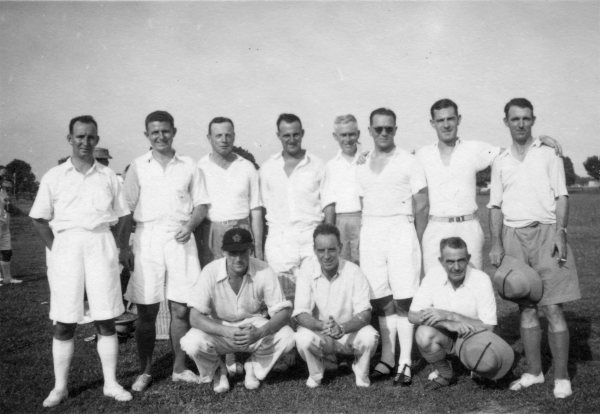
Having arrived in Singapore in August 1941, the 28 officer recruits for the Royal Air Force (RAF) settled into their billet in the coastal villa called Beach House near the civilian aerodrome at Kallang. They also procured their uniforms and commenced their training. Now in a very British colonial territory, they were attended by Chinese boy servants. John Kemnitz wrote home in a letter:
There is one Chinese boy to every two officers & they are very anxious to please, running along with iced water whenever you want it (all you have to do is shout: ‘Boy!’ in a loud voice, & one appears, just like rubbing Aladdin’s Lamp) flitting around while you’re getting dressed, polishing your shoes till they’re mirror-like (I always hated cleaning shoes) and sorting out your clothes, airing them, drying out your towels etc.
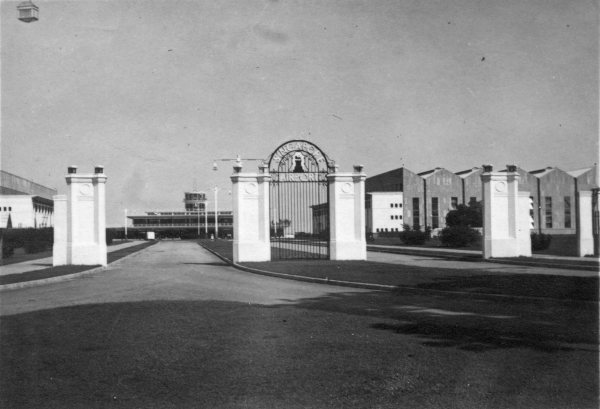
The daily routine of training at Beach House was described by George Louisson as follows:
The daily programme started with reveille about 6 a.m., a lukewarm shower, followed by breakfast at Kallang Airport Hotel; half an hour’s instruction on right turn, left turn etc, then a trip back to Beach House where we received a series of lectures. The subjects were wide and varied, comprising such items as the relative ranks of the Navy, Army and Air Force, with a knowledge of the appropriate rank badges, the various flags flown by the Senior and Air Officers on their cars, talks on Air Force law, the censorship of letters by a padre, the organisation and working of the NAAFI by a retired Lt. Commander RN, the various diseases and means of prevention and a very illuminating lecture by a young Pilot Officer. The latter held up a rifle and prefaced his talk with the remark that what he had was the b………. old service rifle, that we all probably knew as much about it as he did, that there was nothing to it, and that it was only necessary to put a bullet in one end and then pull the trigger, whereupon it came out of the other end, and that was all there was to it! The afternoons were free, and the time was usually spent in giving the shops a good doing over and buying various oriental novelties to send home.
The reference to “right turn, left turn etc” refers to military drill (marching in formation, etc). Some of the men had military experience, but for those who didn’t it was a crash course. Their instructor, a retired Squadron Leader of First World War vintage didn’t help. John Kemnitz wrote home in a letter:
His comments while we’re drilling are most facetious. One chap had his sun-helmet on at an angle – “Dammit Sir” he roared “you’re not wearing a bowler now”: another was not marching in approved style “Dammit Sir” he barked “You look like a policeman gone wrong”: “Hey, you with your tongue out, don’t look at the ground”.

Eventually, in November 1941, the men were gradually posted out to units or for more specialised training. These included roles as administrative officers, fighter controllers or establishing the new radar stations being belatedly set up in Malaya. Donald Duff and George Louisson were initially posted to RAF Seletar in Singapore. Here they trained to work on radar installations, known as Air Ministry Experimental Stations. Station life consisted of rugby (Duff being a player and Far East Command selector), swimming and technical training. In between the men often visited the city and, with their cameras and purchased postcards, preserved a rich archive of what Singapore was like at the time.
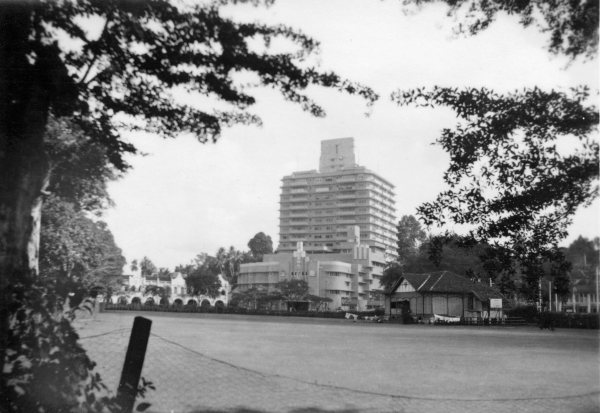
Far East Command, unlike the rest of the RAF, had not had to adjust to a more practical wartime footing and many of the peacetime traditions and archaic practices also became apparent during their stay at Seletar. George Louisson recalled:
All our officers had been issued with a copy of the etiquette to be observed on the Station and it seemed very necessary that one should carefully watch one’s step. One day I received a very rude shock to see a fellow English officer eating green peas off his knife, which made me feel a lot easier in view of these instructions on mess etiquette… The traditional English reserve was encountered in the mess at this stage so that at my table there was very little effort at conversation.”
War Begins
Even as they trained, by early December 1941, tensions in the Far East were rising and the New Zealanders know that something was likely to happen. Despite this, Singapore seemed unprepared and as night fell on 7 December 1941, the city was lit up as usual. Sure enough, Japanese bombers started attacking Singapore at 4.15am on Monday 8 December.

Donald Duff remembered events at RAF Seletar in those early hours :
We knew something would happen on Sunday night and I asked Jack Louisson to take me to the air raid shelter if we were bombed. I did not know where they were but piling into a hole with water on the bottom dressed only in a sarong and a tin hat made me fair game for mosquitos.
We had gone to bed and Jack had got up because of gun fire. He woke me by saying many aircraft were overhead in the searchlights, the perimeter lights were still on and everything started to go up. I was left alone in the room under a table and bombs falling all around. My washing on the line was covered in mud and during a brief lull I dashed outside. I could have been decapitated by Indian gunners of a Bofors who were firing at what seemed to be a very low trajectory. I ignored an order to go to the air raid shelters and stay there because it seemed more sense to get some clothes on.
Three airmen died at Seletar. 61 civilians were killed and 133 were injured in Singapore. Japanese troops landed in the north of Malaya and invaded from Thailand, beginning a victorious advance that would bring them to the Johore Strait separating Malaya from Singapore in less than two months.

In the meantime, members of the group had been posted to active units, seeing first-hand the nature of the war. At his radar unit at Kota Tingii, north-east of Singapore, Don Duff got the unit up and running and able to lend some assistance to the defence of Singapore. It was an uneven struggle, though, and occasionally the ‘Hush Hush Boys’ were in the thick of it. With the British, Indian and Australian forces in disarray and retreating fast, Don Duff volunteered to retrieve top-secret radar equipment from a station at Mersing north of his. Mersing was effectively between Australian and Japanese lines by this stage and the operation took considerable nerve and not a little luck for the RAF men. As Duff recalled:
Our Mersing station had been out of action for some time due to bombing and a difficult situation had arisen because vital and secret equipment had not been evacuated. So with some of our trucks we volunteered to go up. Nearly every year the east coast gets torrential rains with huge floods and if we could make it the conditions would help us. We detached fan belts when crossing flooded areas and put socks over the radiators. It is the first time I have ever seen trucks with lights still going under water and driving along. It was a hair-raising journey in the rain and most of the journey was in No-Man’s Land. On the way back we came to just over the top of a hill but could not stop because of water in our brakes. We slithered down the road expecting to be riddled with bullets. It did not happen, and we were lucky because it was a forward unit of Dogras, an Indian unit. When we stopped, we were checked and in a tent in the jungle at the side of the road we had a good glass of Johnny Walker Black Label with the officers. A welcome toddy for cold and drenched troops.
Ironically, despite their efforts, all the equipment was later lost on a ship bound for Java.
Time to Leave
As the Japanese closed in on Singapore in February 1942, members of the group individually found themselves in the same predicament as the rest of the British forces: how to escape the inevitable fall of the island. These stories alone would warrant a blog, and all involved considerable drama and personal risk.
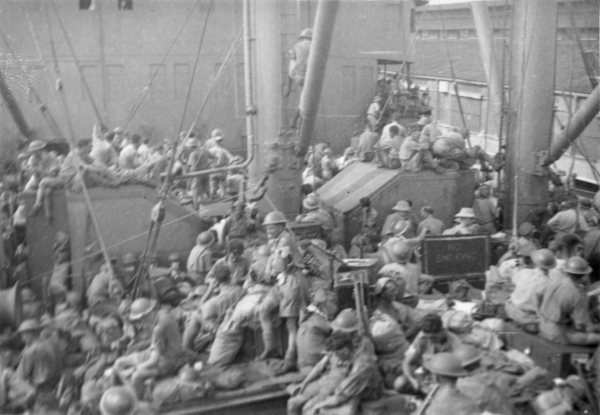
After several false starts, Don Duff and George Louisson eventually escaped on the packed ship, the SS ‘Darvel’, together with most of the radar personnel and some of the RNZAF’s No. 1 Aerodrome Construction Squadron, bound for Batavia (modern Jakarta, Indonesia). Not long out, Japanese aircraft attacked. George Louisson described the carnage:
The alarm was sounded, and the troops took whatever cover was offering. A number of aircraft broke off from the main formation and coming down to about 6,000 feet dropped a load on us. The noise was terrific {and} as they circled, we prepared for another dose. Fortunately, they moved off, much to our relief. There were cries for First Aid kits, fire extinguishers, the order to abandon ship and a call for medical orderlies.
The aftermath was grisly, as he continued:
During the afternoon the dead were sewn up and thrown overboard and the wounded made as comfortable as possible. The deck, which rather resembled a butcher’s shop were cleaned down and smashed glass and porcelain were thrown overboard.
The Darvel was able to continue, however and made it to Batavia, where the passengers joined thousands of RAF personnel desperately trying to prepare Java and Sumatra for more Japanese attacks.
Aftermath and Legacy
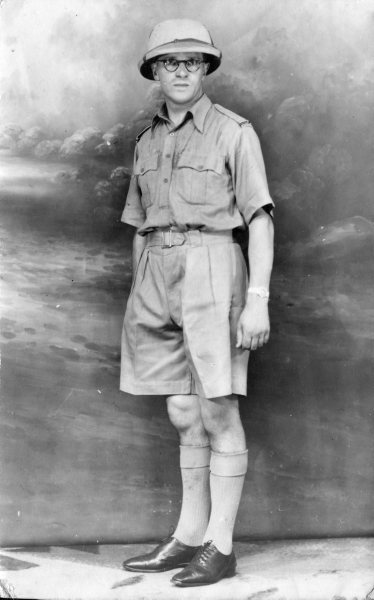
The story for the 28 members of the course did not end with the Fall of Singapore. Of those who had got to Java and Sumatra, most were captured by the Japanese when the Dutch East Indies fell. This included Don Duff, George Louisson and Bill Wellington. These prisoners spent the rest of the war in appalling conditions, suffering from malnutrition, disease and deliberate beatings and cruelty in camps in Sumatra. Their resilience was extraordinary, Don Duff in particular, who was camp adjutant and did much to ease the suffering of fellow prisoners by organising their meagre resources and redistributing the belongings of the dead to those who desperately need them to survive. When they returned home the physical and psychological effects on the New Zealanders were often severe but, miraculously, none of the original 28 lost their lives during the war.
Those who escaped Singapore usually went on to serve in the RAF and RNZAF. As examples, John Kemnitz ended up on Ceylon (modern Sri Lanka) as an air traffic control officer and reached the rank Wing Commander. Carl Zimmermann had worked as in Intelligence Officer in Singapore and, despite wanting to continue with his RAF service, was retained by the RNZAF in New Zealand. His experiences were valuable in setting up the developing RNZAF Intelligence Branch.
The story of the ‘Hush Hush Boys’, is just one of a number of New Zealand war experiences that deserves more attention. Thankfully, Don Duff and George Louisson both wrote memoirs of their experiences, and papers relating to several others are now in the Air Force Museum archives, helping preserve their remarkable story. While they did not fly or fight, their service in a campaign and aftermath that required patience, resilience and courage can only be admired today. For some, like Duff, the ongoing effects of that service would remain with them for the rest of their lives.



